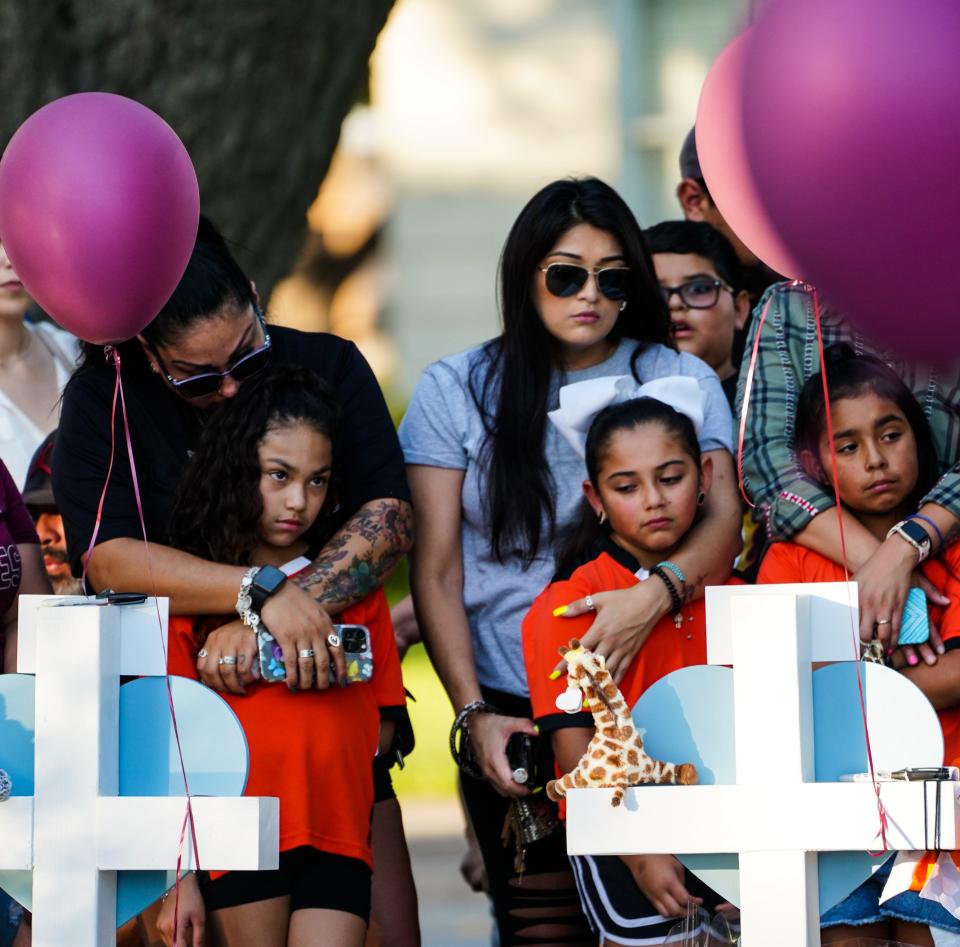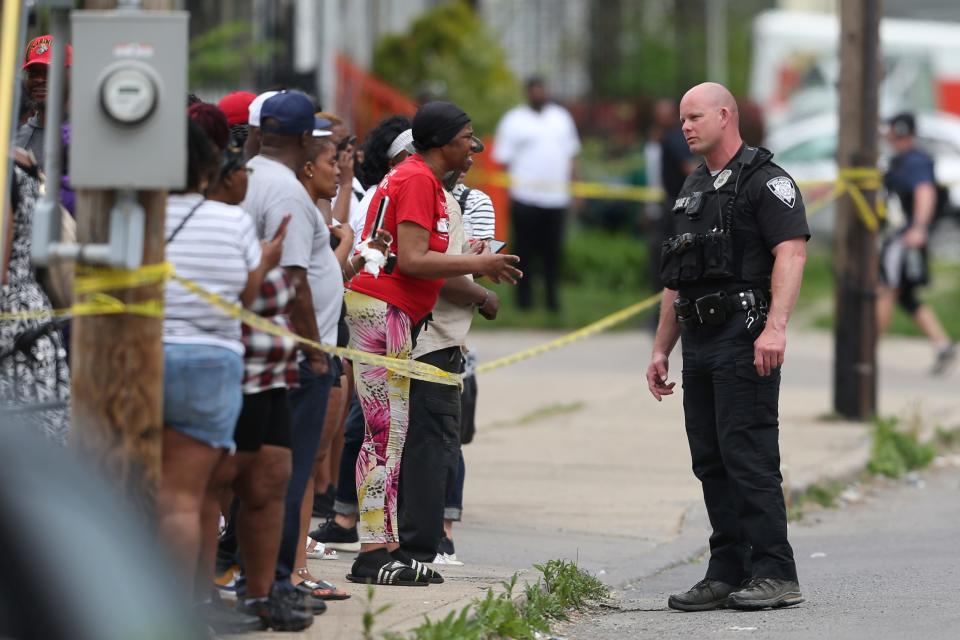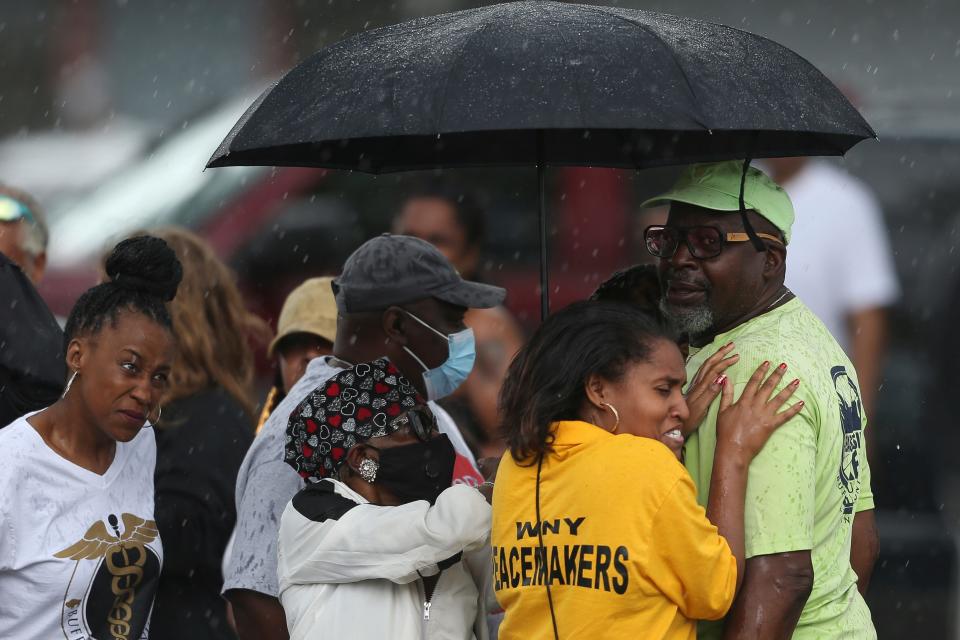Why mass shootings fear is so pervasive: misleading statistics and marathon news coverage

With emotions still raw following the massacre of 19 fourth-graders and two teachers at Robb Elementary School in Uvalde, Texas, the USA TODAY Editorial Board assembled a stunning collection of student reactions to the carnage.
Read it and weep.
Parents around America can empathize with grief-stricken mothers and fathers who gave tearful interviews to the news media eager for gut-wrenching video footage. According to a recent CBS News poll, nearly three-quarters of parents of school-age children are at least “somewhat concerned about the possibility of gun violence at their children’s school," including 1 in 3 who are very concerned.
No wonder sales of bullet-resistant backpacks spiked after the Texas assault.
Opinions in your inbox: Get exclusive access to our columnists and the best of our columns every day
'Are we safe anywhere?'
Survey after survey has found that fears of mass shootings are not restricted to school settings. Nearly half of Americans reported in 2019 being worried that they or a family member will fall victim to a mass shooting, and a third say they avoid certain public places because of the threat of a mass shooting.

Actions speak louder than survey data. People are on edge, concerned that they might, without warning, come face-to-barrel with a gunman holding an AR-15-style rifle. Shoppers rushed out of a suburban Dallas shopping mall mistaking the bang from a skateboard striking against the floor as gunfire. A balloon pop caused the evacuation of a popular shopping complex in Boca Raton, Florida, leading to breaking headlines on cable news about an ongoing active shooter event. Thousands attending a Fourth of July celebration in Myrtle Beach ran for their lives when rumor spread through the crowd that the loud bang wasn’t just fireworks after someone had referenced a gun during a fight.
Highland Park mom's text: 'We're hiding.' Then she and her daughter fled in terror.
Of course, this Fourth of July did bring tragedy to Highland Park, Illinois, when a sniper fired a high-powered rifle from a rooftop onto the crowd at the Independence Day parade below, killing seven and wounding dozens. One man near the site of the shooting expressed the sentiment of countless Americans when he asked, “Are we safe anywhere?”
Mass shootings vs. mass killings
Although feelings of anxiety and apprehension must not be dismissed, fears are not always consistent with the risk. But unlike fear of flying or of sharks that can be controlled by avoidance of airplanes or oceans, students cannot choose to dodge school (other than home schooling), and always buying groceries online so as not to face the possibility of supermarket shootout is hardly ideal. One could decide never to attend a holiday parade or a concert, but staying indoors for fear of the unthinkable is an overreaction.
If there is anything about mass shootings that reflect an epidemic, it is in the spread of panic. It might help restore some sensibility, however, to address two major reasons why fear of mass shootings is so pervasive: misleading statistics and gratuitous news coverage.

Unfortunately, there is widespread confusion about what constitutes a mass shooting. the Gun Violence Archive counts instances in which four or more victims are shot regardless of the extent of injury, whereas The Associated Press/USA TODAY/Northeastern University database uses the longstanding definition of shootings resulting in four or more victim fatalities. Less than 5% of the former are among the latter.
It is problematic that in that aftermath of a horrific massacre, journalists often cite statistics showing hundreds of mass shootings per year in which four or more victims are injured or killed, but then use as examples only mass killings in which four of more victims are fatally shot. Comparing the hundreds of shootings with four or more injuries to those with four or more deaths is like mixing grapes and grapefruits; the words sound similar, but they are far different in magnitude.
Of the more than 600 mass shootings with at least four victims killed or injured, fewer than half occur in public settings and these public shootings result, on average, in one fatality. This translates to a 1-in-1 million risk annually of dying in such an attack. In terms of school children grades K-12, an average of 10 are gunned down a year, and that is out of 50 million students – a 1-in-5 million likelihood.
More than just a matter of misinterpreted statistics
Whatever the odds, the nation mourns the senseless loss of life caused by deadly mass shootings and student homicides. Although rare, these attacks clearly have a disproportionate and wide-ranging impact on perceptions regarding threats to public safety.
NRA member: Why I advocated for Congress to pass gun reforms
Exaggerated fears are more than just a matter of misinterpreted statistics. Unlike mass shootings that transpired in an earlier era, deadly massacres – and even false alarms about active shooters – now receive marathon media coverage, particularly by cable news channels.
Like never before, technology provides the viewer with an up-close and personal view of the horror, often while the event is still unfolding. Images beamed by satellite into living room TV screens show terrorized people running scared or hiding from some heavily armed assailant. Audio recordings of the rat-tat-tat of gunfire are played over and over after each commercial break.

Seeing is believing, and it is easy to believe that mass shootings are a raging epidemic when the news coverage is saturated with stories of pain and agony. Devastating shootings must be reported, of course. But the emphasis should move from pain and suffering to more stories reflecting strength and resilience, such as the Uvalde Little Leaguers playing on to honor their fallen teammates.
The media obviously shouldn’t ignore massacres when they occur. However, by relaying accurate statistics about the risk and avoiding coverage that is more alarming than informing, we can confront the real problem of gun violence without hype and hysteria.
James Alan Fox is the Lipman Professor of Criminology, Law and Public Policy at Northeastern University, a member of the USA TODAY Board of Contributors and co-author of "Extreme Killing: Understanding Serial and Mass Murder." Follow him on Twitter: @jamesalanfox
You can read diverse opinions from our Board of Contributors and other writers on the Opinion front page, on Twitter @usatodayopinion and in our daily Opinion newsletter. To respond to a column, submit a comment to letters@usatoday.com.
This article originally appeared on USA TODAY: Mass shooting epidemic: confusing statistics, marathon news coverage

